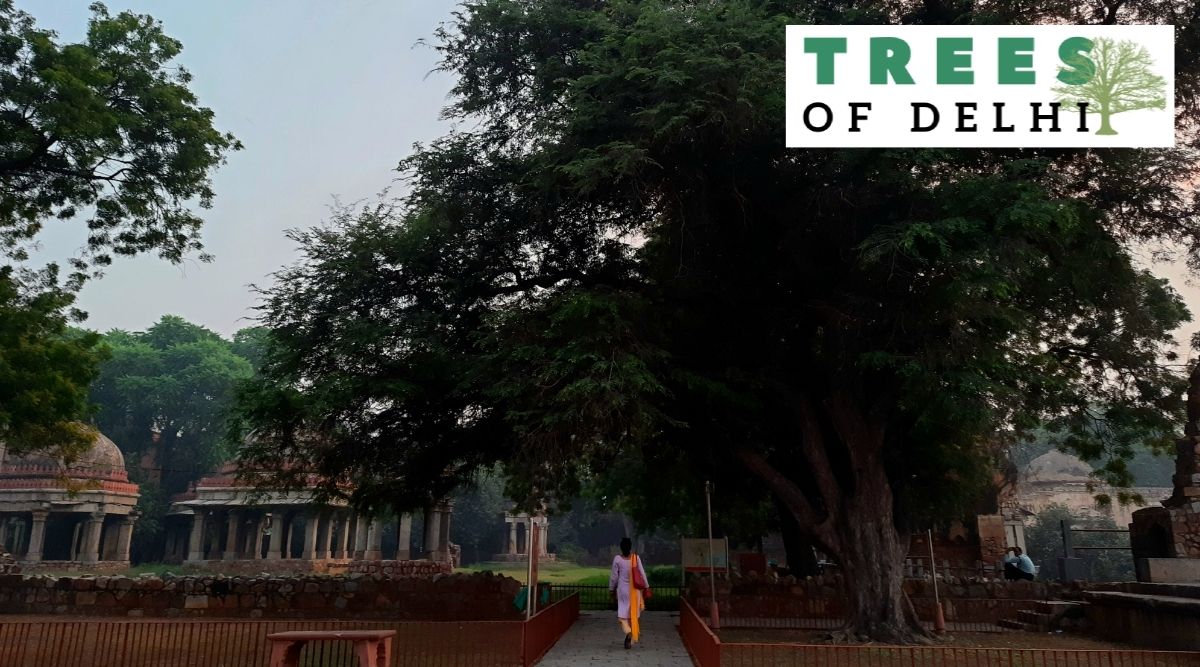 As the day turns to dusk, sunset walkers stop for a break on a bench near the imli tree.
As the day turns to dusk, sunset walkers stop for a break on a bench near the imli tree. As the vibrant hues of coral and blue replace the morning yellows of the sky, three security guards who man the Hauz Khas complex come together under a large imli tree for their evening cup of coffee. A stray dog accompanies them below the tree as they prepare to wrap up the work for the day.
The imli tree stands in the centre of the monuments, looking over the Hauz Khas lake, witnessing constant change in the scenery around it.
As the day turns to dusk, sunset walkers stop for a break on a bench near the imli tree. Even those in their running shoes break for the view. Others stop by to take photos with the lake in the background. Flocks of birds fill the sky and bats can be spotted returning to the monuments.
According to the security guards, the tree would be 40-50 years old. One says that he remembers seeing it since the time he took the job around 11 years ago. Another says that the tree bears fruit every year, and is generally eaten by birds and animals.
The imli tree is tall and the clusters of leaves crowd together, lightly veiling the sky in between the branches. In the company of 14th-century monuments, the imli tree appears to have its own enclosure of sorts, with a fence around it. The tree stands not far from the three-domed building within the complex that houses what was then a mosque and a madrasa, in addition to the tomb of Feroze Shah Tughlaq.
The imli is on a list that the Delhi government had intended to declare as ‘heritage’ trees a few years ago, but nothing around the tree points to any such status having been accorded to it.
Imli trees are deciduous, long-lived ones that were introduced into India from tropical East Africa, Pradip Krishen writes in his book Trees of Delhi. But it was so long ago that they are nearly indigenous, to the extent that Arab traders who came to India named it tamar-i-hind or Indian date, Krishen explains in the book. The tree begins to flower around June, and the fruits ripen in winter. These trees were also used as an avenue tree in Lutyens’ Delhi, Krishen writes.
- The Indian Express website has been rated GREEN for its credibility and trustworthiness by Newsguard, a global service that rates news sources for their journalistic standards.

